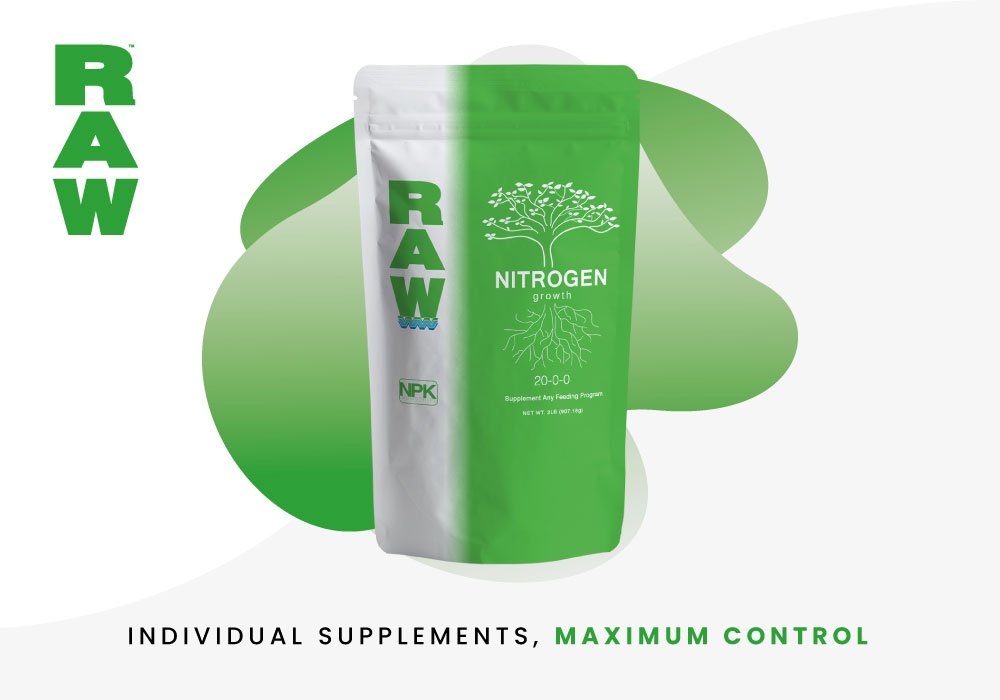fixing nitrogen:
Nature’s way

Did you know that there is more nitrogen in the air we breathe than there is oxygen? Much more! The atmosphere contains over 78% nitrogen and only about 21% oxygen, with about 1% argon and other trace gasses making up the balance. Unfortunately, the molecules of nitrogen gas (N2) are tightly bound together, and are almost entirely unavailable to plants and animals in gaseous form. Only certain groups of microorganisms are able to “fix” nitrogen directly from the air and make it available to plants. So to get enough nitrogen, plants have co-evolved with soil-borne microorganisms in a mutually beneficial relationship. Some plants, such as legumes, have taken the relationship one step further, growing special housing nodules on their roots for nitrogen-fixing bacteria to live in! The nitrogen-fixing bacteria (called Rhizobia) take nitrogen gas from the air and produce water-soluble nitrogen fertilizers for the plants. In return, the plants make sugars and other organic molecules to feed the bacteria. Other “free-living” nitrogen-fixing microorganisms also inhabit the root zone, and many strains of bacteria and fungi participate in the nitrogen cycle.
It wasn’t until the 1913 that human beings found a way to harvest large amounts of nitrogen from the air and turn it into nitrogen fertilisers. It’s called the Haber process. Under high temperatures and pressure, nitrogen’s triple bonds are broken and the nitrogen is combined with hydrogen gas to make ammonia (NH3). The ammonia is then used to make various nitrogen-based fertilisers. The process is very energy intensive. In fact, it is estimated that 3-5% of the world’s annual natural gas production is used solely for the purpose of making nitrogen-based fertiliser! It’s a high price to pay, but the lives of millions of people depend on it. It is now estimated that over 1/3rd of the world’s population is sustained by industrially-produced nitrogen fertilisers. In fact, more atmospheric nitrogen in now fixed by human beings than all of the nitrogen-fixing bacteria on earth, and the trend is increasing as the human population continues to grow!
So nitrogen fertilisers are both a blessing and a curse. We need an abundant supply of nitrogen fertilisers to produce enough food for our growing population, but we are becoming more dependent on fossil fuels in the process, with hidden threats to the environment. The energy-intensive production of nitrogen fertilisers contributes to carbon emissions and global warming. Nitrate fertilisers are also very water soluble and leach easily into ground water and surface waters, creating potential environmental problems and health risks. In some countries, nitrates leaching into ground water have already reached dangerous levels, causing “blue baby” syndrome and other serious health issues. With so much at risk, many scientists around the world are seeking ways to reduce the need for nitrate fertilisers, while sustaining an ever-increasing human population.
Nature already has many of the answers, if we know where to look! Through millions of years of evolution, nature has become very efficient at recycling limited resources, especially nitrogen. The soil is a living thing, with abundant populations of microorganisms working together and sustaining one another. Some microorganisms fix nitrogen from the air and feed it to plants and other microorganisms in the soil. Other microorganisms release the nitrogen stored in decaying organic matter, remobilising nitrogen in the process. Still other microorganisms rebuild nitrogen into vitamins and growth hormones, or provide the raw ingredients needed to make new nitrogen-containing proteins. And thanks to special nitrogen-rich proteins called enzymes, the entire nitrogen-recycling process continues to operate at ambient temperatures and normal atmospheric pressures! Eventually, nitrogen gas is released back into the atmosphere to complete the nitrogen cycle.
So nature is very efficient at recycling nitrogen, but is it enough to meet the intensive demands of modern agriculture and the needs of billions of hungry people? Will it ever become possible to feed the world in an environmentally-responsible way? The answer is yes… but only through continuing education and careful management of our limited natural resources. To meet the challenges of the future we need to make progress on two fronts; we must wisely use the nitrogen fertilizers we are currently manufacturing, and we must nurture the life-giving soil in an economically-sustainable way.
The first major step to feeding our growing population is education in hydroponics. Hydroponics is very efficient at conserving water and natural resources. In re-circulating hydroponics systems, the perfect balance of water and nutrients flow over the roots of plants, and excess nutrient solution is captured for reuse. With careful management, just enough nitrogen and other minerals are added to the water to replace the minerals removed by the plants, and nothing goes down the drain! The practice is called “zero runoff”. The Dutch are already practicing zero runoff on thousands of acres, producing abundant food with minimal inputs. Pollution caused by nitrate runoff is eliminated, while allowing the production of more food in less space, closer to population centres. So hydroponics technology is definitely important if we wish to feed the world in an environmentally-responsible way. But hydroponics is only part of the solution.
The next step in fixing nitrogen nature’s way is the efficient use of biological fertilizers. Biological fertilizers contain specific strains of living microorganisms that are used to inoculate plant roots. For example, Michigan State University recently developed a microbial blend that includes over 30 strains of soil-borne microorganisms, including several strains of nitrogen-fixing bacteria. When applied to plant roots, researchers found that the need for nitrogen fertilizers was cut in half, without restricting quality or yield. In fact, when applied to tomato plants, some university trials showed increases in yield of more than 400%. The responses were so impressive that the MSU blend was awarded a Grand Prize from Popular Science Magazine for green technologies, and it promises to open the door for drastic reductions in the need for nitrate fertilizers in the future. That’s good news for farmers! It’s not often that a technology comes along that saves money, increases quality and yield, and protects the environment at the same time!

RAW Nitrogen contains 20% ammonium nitrogen (N) in a water soluble form. Containing no nitrates or urea which it to be applied at all stages of growth and bloom. Plants take up two forms of nitrogen: nitrate N and ammonium N. Raw Nitrogen is ammonium nitrogen only.
It is also critically important that we nurture our soil. It is possible to meet the nitrogen demands of most crops by simply rotating nitrogen-fixing crops such as legumes and adding composts from crop residues and animal wastes. Farmers used such techniques for thousands of years before the advent of chemical fertilizers! Even if it’s not practical to completely replace nitrogen fertilizers in today’s world, nitrate usage can be greatly reduced by adding adequate organic matter to the soil and cultivating a rich diversity of soil-borne microorganisms. Organic matter not only provides nitrogen and other essential minerals, it also improves the “tilth” of the soil, physically bulking up the soil so that it has better air and water holding capacity. Chemical fertilizers can readily meet the nitrogen needs of plants, but they do nothing to contribute to the tilth of the soil. In fact, overusing nitrate fertilizers can actually have a harmful effect on the microorganisms that fix nitrogen or contribute to soil structure. Good sources of nitrogen-rich organic matter include alfalfa meal, cotton seed meal and carefully-formulated composts. Blood meal provides a quick-release nitrogen source, but it is “hot” and should be used with caution!
Another new frontier in nitrogen management is the judicious use of organic biostimulants. Organic biostimulants are natural substances which, when used in small quantities, speed up the metabolism of plant cells and beneficial microorganisms. It was found that small amounts of certain plant extracts, coenzymes and microbial byproducts have a dramatic effect at the cellular level. As cellular metabolism is increased, beneficial microorganisms multiply quickly and excrete digestive enzymes that help release the nitrogen and other nutrients locked up in the soil. Biostimulants also activate the enzymes that the microorganisms produce, speeding up chemical reactions in the root zone. At the same time, biostimulants have a direct effect on root cells, allowing minerals to be taken up by the plant much more efficiently. Biostimulants are not fertilizers. They are required in very small amounts, but they have a dramatic effect on nutrient uptake and plant growth. Seaweed extracts, amino acids, humic acids, B-vitamins, simple carbohydrates or combinations thereof have an energizing effect on the life in the soil. In fact, soils can actually become more fertile over time as nature efficiently recycles nitrogen and other essential elements in the soil web.
Amino acids are biostimulants that provide a natural stimulus to the nitrogen cycle. Most of the biological nitrogen stored in plant tissue is locked up in the form of proteins. During the final stages of decomposition of plant matter, many strains of bacteria and fungi excrete digestive enzymes called proteases, which break down proteins into amino acids. The amino acids become a source of nitrogen and carbohydrates to the microorganisms, with beneficial side effects to the plant. For example, some amino acids are changed into vitamins and growth hormones directly on the roots of plants. Other amino acids are intermediate chelators, attaching to mineral ions and making them more soluble to the plant. Some amino acids even stimulate root cells to open specific ion channels, allowing essential minerals to be taken up by the plant thousands of times faster than simple osmosis! Although amino acids are not a primary source of nitrogen fertilizer to the plant, they are a good secondary source of nitrogen. As the microorganisms in the root zone die, amino acids eventually release their ammonium-nitrogen. The ammonium ions are either taken up directly by plants, converted to nitrates or used to feed other microorganisms. In the meantime, the bodies of the microorganisms store the nitrogen and help prevent the leaching of inorganic nitrogen into the environment.
It is my belief that it is always better to work with nature than against it. When you work with nature, there are often many unexpected positive side effects. After all, nature has been orchestrating the chemistry of life long before human beings appeared on the planet! On the other hand, when we work against nature, negative side effects often show up sooner or later. It’s all about balance. Synthetic nitrogen fertilizers are not bad in and of themselves. In fact, mineral fertilizers are taken up by plants in exactly the same form as those provided by nature, and they have an important place in the history of the human race. But in order to feed the world, we must also have a world to feed. Being good stewards of the earth requires careful management of our natural resources. If we work with nature in an intelligent and responsible manner, we can help make the world a better place for generations to come.
Copyright© 2013
Harley Smith
RAW Soluble Powdered Nutrients
Available from Easy Grow Wholesale.
For pricing and further information please call
+44 01472 346 900
UK Freephone 0800 612 9099
or email
sales@easy-grow.co.uk
Want to read more blog posts?
Head back to the blog home page for more resources and information!


